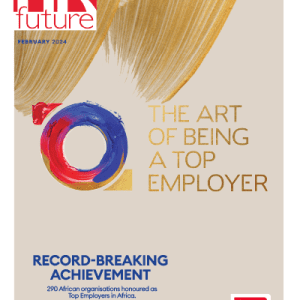For HR professionals who feel stuck, stalled, or simply ready for something new, here’s the truth: you don’t need to burn it all down to make a move. You already have leverage. You just need to use it differently.
That leverage?
Recertification credits.
Those same credits, often scrambled for each cycle, can actually be your ticket to a strategic pivot. Whether you’re craving a shift into coaching, tech, or even entrepreneurship, the way you use your recertification hours can fundamentally change your trajectory.
To dig deeper into this often-overlooked tactic, I recently spoke with Dave Rietsema, a former HR executive and founder and CEO of HRInsidr, a platform known for helping HR pros not only stay certified, but stay ahead. His perspective is clear: “Far too many people treat recertification like a chore. In reality, it can be one of the smartest career tools in your arsenal.”
Stop Thinking Checkboxes. Start Thinking Strategy.
Most HR professionals pursue recertification credits by default. They attend whatever webinars or courses are convenient or free, with no bigger strategy behind their choices. “If you’re using your recertification credits to passively collect hours, you’re wasting an opportunity,” says Rietsema. “These hours are yours. Make them work for your next chapter.”
The first step is to get clear on your direction — get clear on where you want to go.
- If you’re aiming to become a fractional HR consultant, focus on the skills that matter. Focus on business development, client management, and legal compliance refreshers.
- Those dreaming of a role in people analytics or HR tech should prioritize systems training and technical skills. Stack your hours with systems training, data privacy certifications, and SQL or Excel upskilling.
- To move into employee experience design, focus on courses in UX, behavioral science, and employee journey mapping. Seek out courses in UX principles, behavioral science, employee journey mapping, and digital feedback tools.
The Power of Intentional Learning
Learning is only as valuable as your ability to apply it. So if you’re trying to break into a new HR function or pivot to an adjacent field, pick credits that build credibility and confidence.
Rietsema suggests aligning your recertification hours with your resume strategy. “Think of each credit like a building block in your narrative. If you want to shift to HR tech, stack tech-related credits. Then when you’re interviewing, you can point to the concrete steps you’ve taken to prepare. It shows drive.”
He also recommends tracking and curating your learning as part of your LinkedIn content strategy. “Don’t just collect certificates, talk about them. Share key takeaways. Post insights. Build a trail that hiring managers can follow.”
This kind of visibility does two things: it reinforces your personal brand and signals initiative to potential employers. More importantly, it makes you searchable. Hiring managers and recruiters often look for specific skills—if you’ve documented your journey through posts and engagement, you’re more likely to show up in their results.
Intentional learning also lets you test the waters before fully diving into a new field. For instance, if you’re considering a pivot into DEI or talent tech, using your recertification credits to explore those areas gives you low-risk, high-reward exposure. You might confirm your interest, or discover a better fit along the way.
From Certified to Sought-After
Done right, recertification isn’t just about expanding your value in the marketplace. As roles evolve and companies lean harder into tech, data, and employee experience, demand for agile, cross-functional HR leaders is growing. Those who’ve used their recertification hours to learn emerging disciplines are often first in line.
Rietsema expects this trend to accelerate, “Hiring managers aren’t just scanning for SHRM or HRCI credentials anymore. They’re asking, ‘What have you done with them?’ The more targeted and forward-looking your credits, the more they see you as a future-ready leader.”
Intentional strategy can make a powerful difference here. If you’re moving toward HR operations, tech, or leadership, gear your credits to those skill sets, and then position them clearly on your resume, cover letter, and LinkedIn.
In fact, HR professionals who targeted their recertification efforts toward digital tools and leadership principles saw a 21% increase in job interview callbacks.
That’s not fluff — that’s positioning.
Make It Count: Three Ways to Get Ahead
Turning a routine requirement into a launchpad for change starts with intentional strategy.
Rietsema offered three sharp takeaways:
- Audit your last recertification cycle. “Where did your hours go? Are they telling the story you want to tell next year?”
- Tie your hours to career goals. “If you don’t have a career goal yet, your first credit should be a workshop on finding one.”
- Use credits as career currency. “Negotiate to have your employer fund the courses that will move you forward, not just the business. That’s a win-win.”
You Don’t Need Permission to Evolve
Here’s the best part— You don’t need to quit your job to start building your pivot. Strategic recertification lets you explore without risk, gain credibility without going back to school, and stay certified while steering your own future. Investing in your own development is not only a smart move, but a signal to future employers that you’re growth-minded, engaged, and ready for more.
As Rietsema puts it, “Your current role doesn’t define your ceiling. Your choices do. If you start treating your recertification credits as a personal growth fund instead of a compliance box, everything begins to open up.”
And the ripple effect is real. When you’re engaged in purposeful development, you’re more likely to contribute new ideas, seek strategic projects, and step into leadership organically, sometimes even before you’ve officially changed roles.
For those who want to stretch beyond compliance and policy into purpose and possibility, your next move might already be on your calendar, you just haven’t thought of it that way yet.
Make your credits count.
Make your move.
Guest writer


























